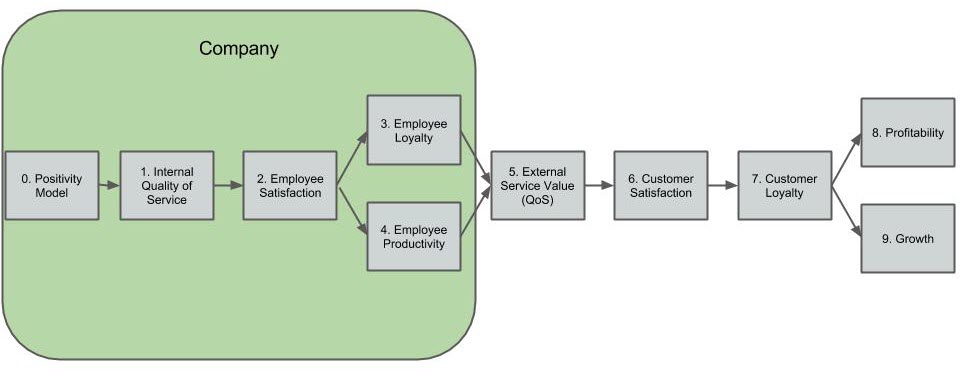Difference between revisions of "Positivity Model"
From Projects
(→Internal Positivity Model) |
(→Internal Positivity Model) |
||
| Line 18: | Line 18: | ||
* Positive Outliers | * Positive Outliers | ||
* Step 0 Inputs: Something to Look Forward to, Conscious Acts, Infusing Positivity into Surroundings, Exercise (physical), Exercise (signature strengths), $ on Experiences, Meditate | * Step 0 Inputs: Something to Look Forward to, Conscious Acts, Infusing Positivity into Surroundings, Exercise (physical), Exercise (signature strengths), $ on Experiences, Meditate | ||
| + | * Tetris - Positive activities put to work. | ||
Revision as of 09:21, 9 September 2014
Service Models, Profitability and Revenue Growth
As I discussed in the Service-Profit Model - profitability and revenue growth in any organization is driven by satisfied customers. And while companies go to great lengths to understand their customer satisfaction (C-Sat) scores, using various methods, many organizations fail to examine the entire service-profit chain, and what feeds a successful service model.
My own service model is a blend of 3 platforms:
- The Service-Profit Chain
- The Internal Positivity Model (described below)
- The Optimization Model (The ROC, and tuned supporting services)
In order to execute against the entire service-profit chain, we must examine how to feed step 1, the internal quality of service. My model supports optimizing the chain, but extends further by focusing on step 0. - a positivity framework:
Internal Positivity Model
- Losada line
- Measures - internal E-Sat correlated to external C-Sat
- Positive Outliers
- Step 0 Inputs: Something to Look Forward to, Conscious Acts, Infusing Positivity into Surroundings, Exercise (physical), Exercise (signature strengths), $ on Experiences, Meditate
- Tetris - Positive activities put to work.
